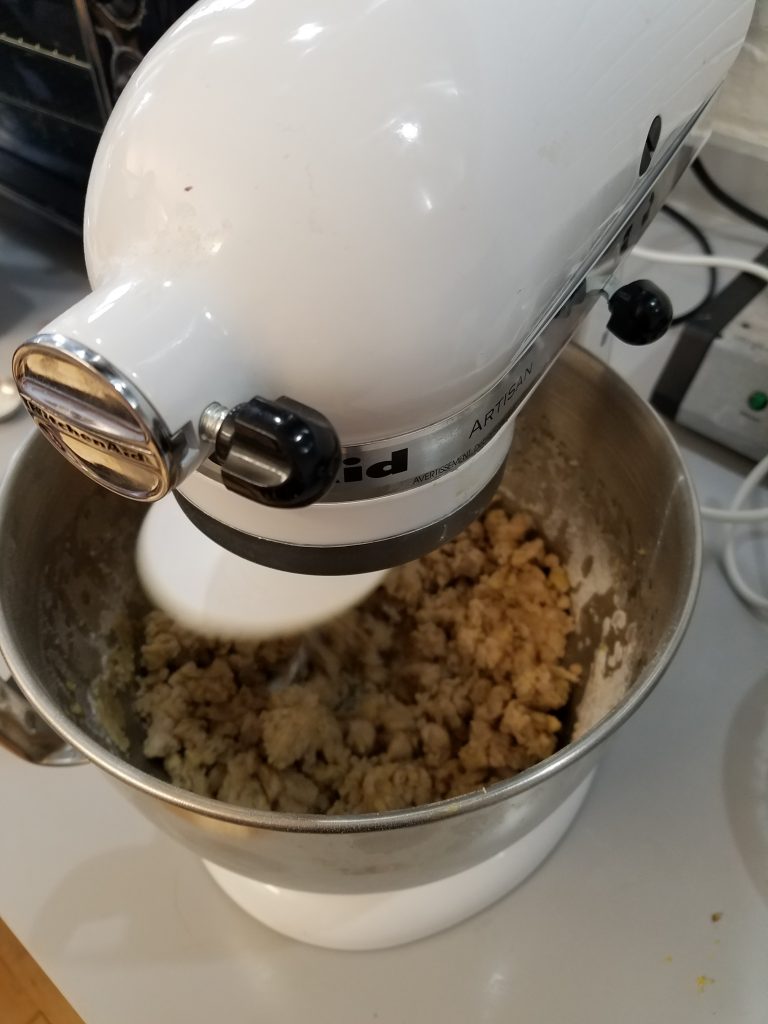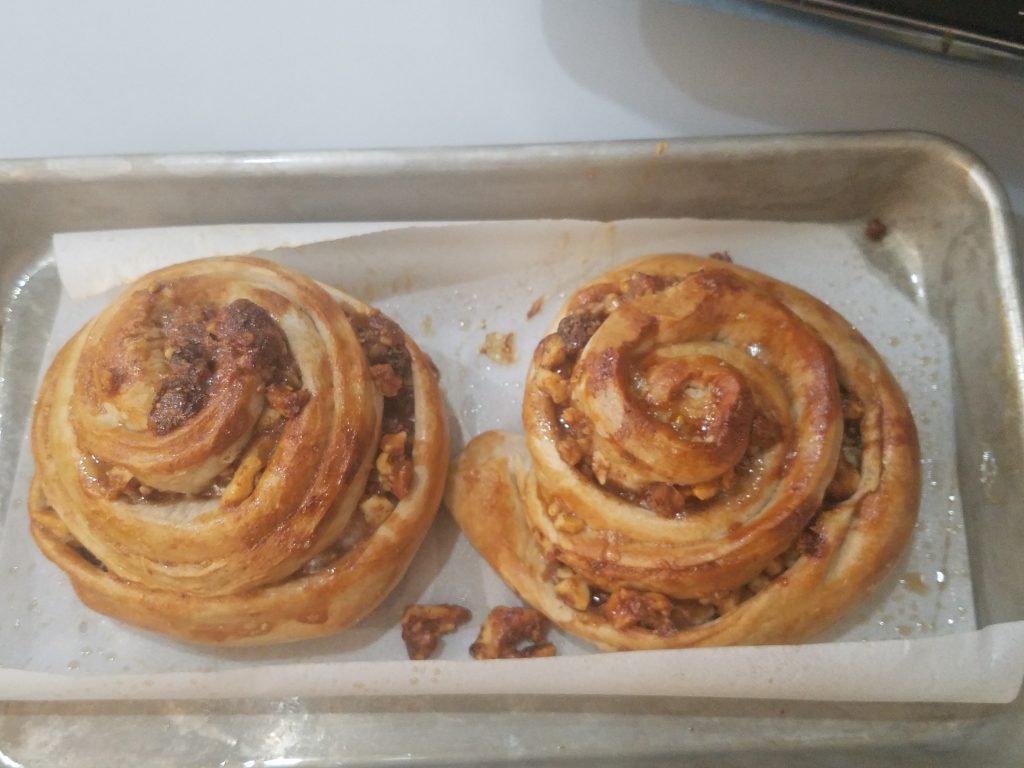break me off a pitta that ‘mpigliata

The recipe we made today is something of a mouthful, both to pronounce and to eat: pitta ‘mpigliata, a traditional pastry from the Calabrian region of southern Italy.
We started making the pastry by putting together the filling, a mixture of chopped walnuts, raisins, honey, cinnamon, and lemon zest – delicious, right? Then we began the more difficult task of making the dough.

This dough was an interesting recipe, much different from your typical French pastry dough – instead of butter, we cut the flour with olive oil and wine. By the way, we used cake flour for this recipe instead of all-purpose. If you remember from my last post, I discussed the protein content of different flours and how they relate to the texture of a finished baked good. While the cake flour we used wasn’t great for our breadsticks, in theory, it should be much better for pastry! Cake flour has a low protein content – of only around 8%, compared to bread flour’s 12% – so it forms less gluten, which hopefully means a softer, flakier crust for our pastry. Additionally, we combined the flour with oil, which should help prevent the development of gluten by interfering with the chemical reactions between the water and the glutenins & gliadins (the proteins that form gluten) in the flour, as oil and water naturally repel. The baking powder in the dough acts as a chemical leavening agent. It will give our dough a bit of a “rise” so that it’s not too dense, without creating the chewy texture of yeast-risen bread.

We kneaded the dough in the stand mixer for a bit, being careful not to overwork it.

Then we rolled out the dough and sliced it to form the beginnings of our pitta ‘mpigliata! In hindsight, we might have worked the dough a little too much during this stage, as a couple of attempts at rolling it were necessary to get it right. Oops.

The stuffing we made earlier reappears! We drizzled the strips of dough with honey to make it stick…

…then we rolled our pittas into the traditional rosette shape.

Finally, we baked them! They took quite a while to become finished all the way through, but aren’t they all the more beautiful for it? Our suspicions that we might have overworked the dough in the rolling stage may have been confirmed, however, as the pastry was a little less light and flaky than we expected. Listen to us talk about what went well and what didn’t during the process in our reflection video below:
Hi Jessi and Sydney!
I thought your reflection was really good, even if some things went wrong. Your narrative was great, and your personality comes through. Your photos were really nice, too!
You guys win for best pun. The color on the pitta from baking it looks great!